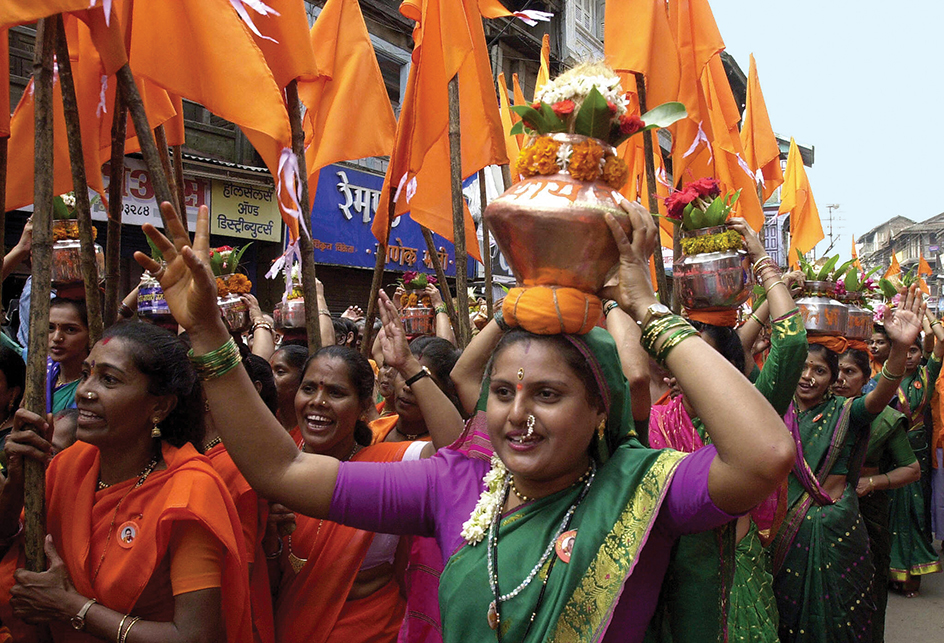Kumbh Mela, << KOOM muh lah, >> also called Kumbha Mela, is a Hindu festival that takes place every three years. The festival rotates among four holy cities in northern and central India—Haridwar, Nasik, Allahabad (also known as Prayag), and Ujjain. The time of the festival in each city depends on the position of the planets at that particular location. People travel from all over the world to take part in the celebration.

The name Kumbh Mela refers to the kumbh or kumbha, which is the pitcher or pot that figures in the story around which the festival centers. Mela means fair or festival. There are many versions of the story, which comes from the ancient Hindu writings known as the Puranas. One version concerns a battle between gods and demons for a pitcher of amrit (a substance with the power of immortality). The gods fled with the kumbh, despite their agreement to share the drink with the demons. Some of the amrit spilled onto the earth at Haridwar, Nasik, Allahabad, and Ujjain. Hindus believe that bathing in the Ganges at these sacred places will wash away their sins.
The Kumbh Mela is one of India’s oldest festivals. Today, it is one of the largest religious gatherings in the world, particularly when it is held in the larger cities of Haridwar and Allahabad. Millions of people form processions to the Ganges to bathe. Attendees include many sadhus, holy men from religious communities who fast and deny themselves worldly pleasures. In addition to bathing, activities may include listening to religious talks, singing devotional songs, and feeding the sadhus. Smaller versions of the festival, called Ardh Kumbh Mela or Ardh Kumbh, take place every six years at Haridwar and Allahabad.
See also Allahabad ; Ganges River ; Haridwar ; Hinduism .
